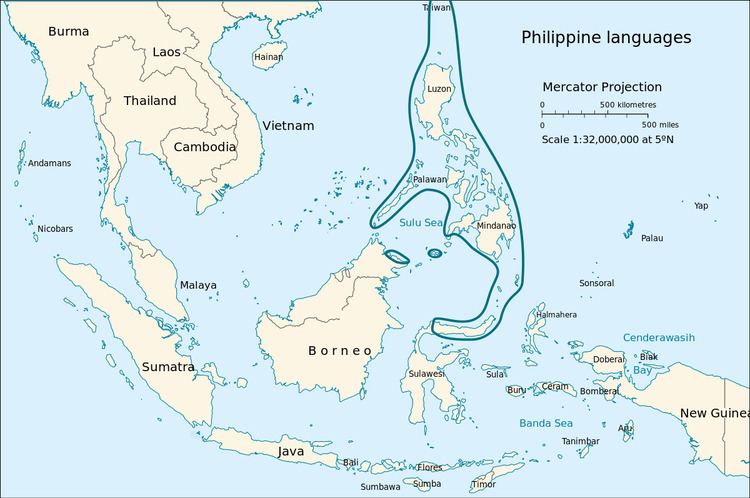ISO 639-2 / 5 phi | ||
 | ||
Geographicdistribution PhilippinesNorthern Sulawesi, IndonesiaEastern Sabah, MalaysiaOrchid Island, Taiwan Linguistic classification AustronesianMalayo-PolynesianBorneo-Philippine languagesPhilippine Subdivisions NorthernCentralSouthern?Gorontalo–Mongondow?Sama–Bajaw?Minahasan?Sangiric Glottolog Nonegrea1284 (Greater Central Philippine) Similar Austronesian languages, Formosan languages, Malayo Polynesian languages | ||
In linguistics, the Philippine languages are a 1991 proposal by Robert Blust that all the languages of the Philippines and northern Sulawesi—except Sama–Bajaw (languages of the "Sea Gypsies") and a few languages of Palawan—form a subfamily of Austronesian languages. Although the Philippines is near the center of Austronesian expansion from Formosa, there is little linguistic diversity among the approximately 150 Philippine languages, suggesting that earlier diversity has been erased by the spread of the ancestor of the modern Philippine languages. Philippine languages make up the oldest non-Formosan languages of the Austronesian language family, with several languages preserving the proto-Austronesian schwa and d–r assonance lost in the Sunda–Sulawesi languages.
Contents
Map of Philippines
Classification
From approximately north to south, Adelaar and Himmelmann (2005) divide the Philippine languages into the following groups:
In addition, the Umiray Dumaget, Manide and Inagta Alabat languages are unclassified within the Philippine family.
Vocabulary comparison
Comparison chart between several selected Philippine languages spoken from north to south with Proto-Austronesian first for comparison.
